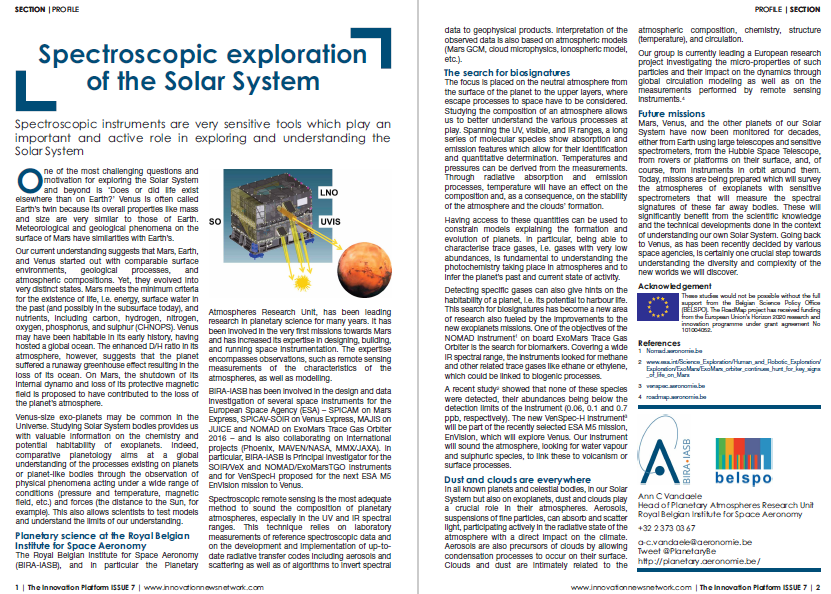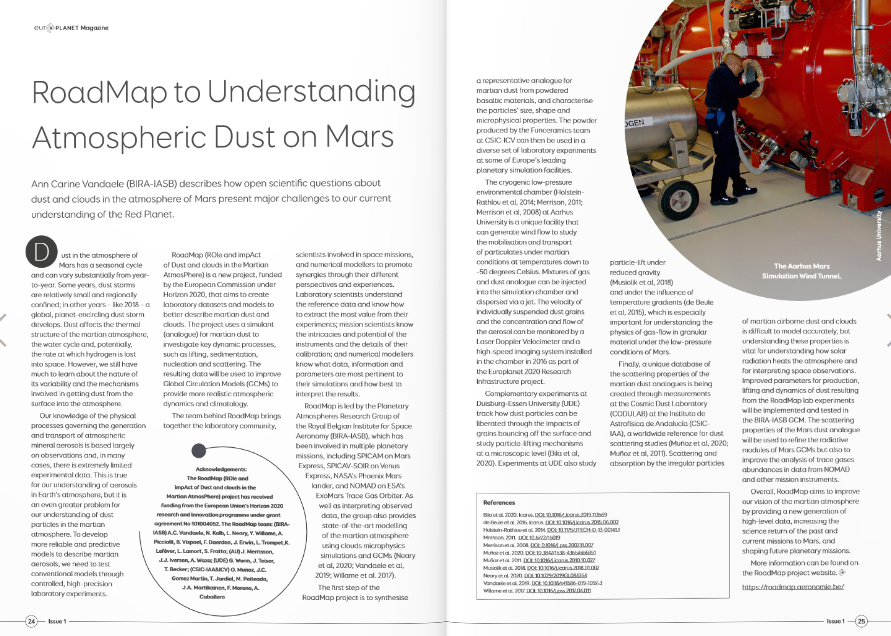By combining observations from three international spacecraft at Mars, scientists were able to show that regional dust storms play a huge role in drying out the Red Planet.
Dust storms heat up higher altitudes of the cold Martian atmosphere, preventing water vapor from freezing as usual and allowing it to reach farther up. In the higher reaches of Mars, where the atmosphere is sparse, water molecules are left vulnerable to ultraviolet radiation, which breaks them up into their lighter components of hydrogen and oxygen. Hydrogen, which is the lightest element, is easily lost to space, with oxygen either escaping or settling back to the surface.
“All you have to do to lose water permanently is to lose one hydrogen atom because then the hydrogen and oxygen can’t recombine into water,” said Michael S. Chaffin, a researcher at the Laboratory for Atmospheric and Space Physics at the University of Colorado at Boulder. “So when you’ve lost a hydrogen atom, you’ve definitely lost a water molecule.”
Scientists have long suspected that Mars, once warm and wet like Earth, has lost most of its water largely through this process, but they didn’t realize the significant impact of regional dust storms, which happen nearly every summer in the planet’s southern hemisphere. Globe-enveloping dust storms that strike typically every three to four Martian years were thought to be the main culprits, along with the hot summer months in the southern hemisphere when Mars is closer to the Sun.
But the Martian atmosphere also gets heated during smaller, regional dust storms, according to a new paper published August 16 in the journal Nature Astronomy. The researchers, an international team led by Chaffin, found that Mars loses double the amount of water during a regional storm as it does during a southern summer season without regional storms.
“This paper helps us virtually go back in time and say, ‘OK, now we have another way to lose water that will help us relate this little water we have on Mars today with the humongous amount of water we had in the past,” said Geronimo Villanueva, a Martian water expert at NASA’s Goddard Space Flight Center in Greenbelt, Maryland, and co-author on Chaffin’s paper.
The full press release can be found on the NASA website here
The RoadMap project is mentioned in a recent paper published by The Innovation Platform. It will be available in Issue7 of their Magazine.
The text is however already available on their web site, see here

18 Feb 2021
NASA's latest and most complex mission to the Red Planet has touched down at Jezero Crater. Now it's time to begin testing the health of the rover.

ESA Trace Gas Orbitor will be providing assistance as a data relay for the lander.
The full NASA press release can be found here.
Members of BIRA-IASB, and in particular of the Planetary Atmospheres Group, participated to a live show here.
11 June 2021 - The official magazine of Europlanet, the European community for planetary science, has just been launched.
The first issue of the Europlanet Magazine has been published on line today. The e-Magazine aims to highlight the range of activities carried out by the partners of Europlanet 2024 Research Infrastructure (RI), the members of the Europlanet Society, the Europlanet Early Careers Network, academic and industrial partners, and the wider planetary community. The Magazine is published twice a year in May/June and November/December.
The Europlanet Magazine is funded through the Europlanet 2024 RI project (supported by the European Union’s Horizon 2020 research and innovation programme under grant agreement No 871149). Currently, the Europlanet Magazine is only available online as an e-magazine.
This first issue has a strong focus on Mars, including European contributions to current missions, experimental research in labs and in the field, and outreach initiatives to engage the next generation.It looks back at the origins of Europlanet and its links to the Cassini-Huygens mission at the beginning of this century. It also has updates on the Winchcombe meteorite and on several new partnerships to support planetary science.
Several members of the RoadMap consortium are actively contributing to the Europlanet Society.
One of the articles in this first issue is describing the RoadMp project, see here.

18 Feb. 2021
Dr. S. Robert of the BIRA-IASB Planetary Atmospheres Group was interviewed during a special event organized by the Public Observatory Armand Pien (Gent, Be) about the Perseverance landing.
The interviews' extract can be seen here (part 1 and part 2).
The full event has been recorded and can be seen on Youtube.
Page 6 of 7


